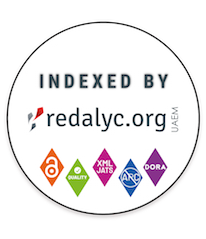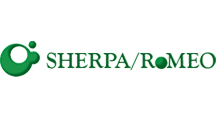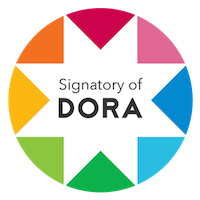Genetic and environmental effects on production of dairy goats under semi-intensive tropical conditions
DOI:
https://doi.org/10.15517/am.2025.61142Keywords:
lactation curves, parity number, kidding season, peak productionAbstract
Introduction. The study of factors affecting the productive performance of dairy goats under tropical conditions is essential for optimal resource utilization. Objective. To quantify the impact of genetic and environmental factors affecting the productive performance of dairy goats under semi-intensive tropical conditions. Materials and methods. The research was conducted at the Finca Experimental Santa Lucía of the Universidad Nacional, Heredia, Costa Rica. The experimental period spanned from January 2007 to December 2023. A total of 15,686 daily milk yield records were analyzed from 191 dairy goats of Saanen (S) and Saanen•Toggenburg (S•T) breed types. A generalized linear mixed model was used to evaluate the effect of various predictor variables on daily milk yield, and standard lactation curves were fitted for different genetic and environmental conditions using the Wood function. Results. Highly significant effects (p < 0.001) were determined for parity number, year of kidding, lactation week, buck category, number of offspring, season, and month of kidding on milk yield. For primiparous goats of S and S•T breeds kidding in the rainy season, peak daily milk yields of 2.46 and 2.54 kg were estimated, reached at weeks 6.4 and 5.9, with persistencies at the end of lactation of 86 % and 84 %, respectively. Conclusions. Multiparous status and access to feed with higher nutritional content during the rainy season were factors associated with higher milk yield. Lactation curves revealed different patterns in milk production between primiparous and multiparous goats, as well as among different kidding seasons and breed types. The study provides valuable information for commercial validation and optimization of lactating goat management under semi-intensive tropical conditions.
Downloads
References
Almasri, O., Abou-Bakr, S., Ibrahim, M., Kahil, O., Asaad, Z., Ghoush, M., & Awad, M. (2023). Lactation curve and milk production traits of Syrian Damascus goats. Egyptian Journal of Animal Production, 60(1), 7–16. https://doi.org/10.21608/ejap.2023.177189.1051
Barboza Mora, M. A., Jiménez Castro, J. P., Porras Solís, Á. J., Miranda Bonilla, O. M., & Camacho Cascante, M. I. (2020). Situación socioeconómica y productiva de sistemas caprinos en la Región Huetar Norte, Costa Rica. Perspectivas Rurales Nueva Época, 18(35), 1–24. http://doi.org/10.15359/prne.18-35.1
Bidot, F. A. (2013). Goat milk production and lactation duration of Nubian, Saanen and Toggenburg genotypes under restricted grazing and concentrate supplementation. Abanico Veterinario, 3(1), 30-35.
Boshoff, M., Lopez-Villalobos, N., Andrews, C., & Turner, S. (2024). Modeling daily yields of milk, fat, protein, and lactose of New Zealand dairy goats undergoing standard and extended lactations. Journal of Dairy Science, 107(3), 1500–1509. https://doi.org/10.3168/jds.2023-23926
Calvo Cardona, S. J. , Corrales Álvarez, J. D. , Rocha Sarmento, J. L. , González Herrera, L. G., & Cardona Cadavid, H. (2015). Associação de SNPs nos genes para κ-caseína e β-lactoglobulina com curvas de lactação em cabras leiteiras. Pesquisa Agropecuária Brasileira, 50(3), 224–232. https://doi.org/10.1590/s0100-204x2015000300006
Chacón-Villalobos, A., & Mora-Valverde, D. (2017). Caracterización sectorial de la caprinocultura en Costa Rica Universidad de Costa Rica. Nutrición Animal Tropical, 11(2), 23–60. https://doi.org/10.15517/nat.v11i2.31653
Daniel, W. W., & Cross, C. L. (2019). Biostatistics: A foundation for analysis in the health sciences (11th ed.). John Wiley & Sons.
Ferreira da Fonseca, J., de Oliveira Machado, V., Matos de Paiva, M. P. S. L., Facó, O., & Souza-Fabjan, J. M. G. (2019). Recent advances in goat artificial insemination in Brazil. Revista Brasileira de Reprodução Animal, 43(2), 66–71.
Food and Agriculture Organization of the United Nations. (2007). The state of the world’s animal genetic resources for food and agriculture. Commission on genetic resources for Food and Agriculture. https://www.fao.org/4/a1250e/a1250e.pdf
Gaddour, A., Najari, S., & Ferchichi, A. (2009). Lactation curve of local goat, pure breds and crosses in Southern Tunisia. Journal of Applied Animal Research, 36(1), 153–157. http://dx.doi.org/10.1080/09712119.2009.9707051
Gbur, E. E., Stroup, W. W., McCarter, K. S., Durham, S., Young, L. J., Christman, M., West, M., & Kramer, M. (2012). Analysis of generalized linear mixed models in the agricultural and natural resources sciences. American Society of Agronomy, Soil Science Society of America, & Crop Science Society of America. https://doi.org/10.2134/2012.generalized-linear-mixed-models
Goetsch, A. L., Zeng, S. S., & Gipson, T. A. (2011). Factors affecting goat milk production and quality. Small Ruminant Research, 101(1-3), 55–63. https://doi.org/10.1016/j.smallrumres.2011.09.025
Henao, K. T., Blandón, Y. A., González-Herrera, L. G., Cardona-Cadavid, H., Corrales, J. D., & Calvo, S. J. (2017). Efectos genéticos y ambientales sobre la curva de lactancia en cabras lecheras del trópico. Livestock Research for Rural Development, 29(5), Artículo 97. http://www.lrrd.org/lrrd29/5/hena29097.html
Hokmollahi, F., & Ehsani, M. R. (2020). Characteristics of Nodooshan goat milk and identification of volatile compounds in traditional Nodooshan goat cheese during ripening. Iranian Journal of Nutrition Sciences and Food Technology, 14(4), 67–76. http://nsft.sbmu.ac.ir/article-1-2771-en.html
Instituto Meteorológico Nacional. (2017). Datos climáticos estación meteorológica Finca Experimental Santa Lucía. Instituto Meteorológico Nacional.
Irano, N., Braga Bignardi, A., Baldi Rey, F. S., Molina de Almeida Teixeira, I. A., & Galvão Albuquerque, L. (2012). Parâmetros genéticos para a produção de leite em caprinos das raças Saanen e Alpina. Revista Ciência Agronômica, 43(2), 376–381. https://doi.org/10.1590/S1806-66902012000200022
Khemiri, H., Darej, C., Attia, K., M’Hamdi, N., Chouchi, I., & Moujahed, N. (2023). Assessment of the main factors affecting goat milk yield and composition in the North West region of Tunisia. Mljekarstvo: Časopis za Unaprjeđenje Proizvodnje i Prerade Mlijeka, 73(2), 105–117. https://doi.org/10.15567/mljekarstvo.2023.0204
Krajinović, M., Pihler, I., Simin, V., Jocić, A., Nićin, S., & Žujović, M. (2011). The influence of number of lactation on milk yield parameters in German fawn goats. Biotechnology in Animal Husbandry, 27(4), 1469–1475. https://doi.org/10.2298/bah1104469k
Lehmann, J. O., Mogensen, L., & Kristensen, T. (2019). Extended lactations in dairy production: Economic, productivity and climatic impact at herd, farm and sector level. Livestock Science, 220, 100–110. https://doi.org/10.1016/j.livsci.2018.12.014
León, J. M., Macciotta, N. P. P., Gama, L. T., Barba, C., & Delgado, J. V. (2012). Characterization of the lactation curve in Murciano-Granadina dairy goats. Small Ruminant Research, 107(2-3), 76–84. https://doi.org/10.1016/j.smallrumres.2012.05.012
Lôbo, A. M. B. O., Lôbo, R. N. B., Facó, O., Souza, V., Alves, A. A. C., Costa, A. C., & Albuquerque, M. A. M. (2017). Characterization of milk production and composition of four exotic goat breeds in Brazil. Small Ruminant Research, 153, 9–16. https://doi.org/10.1016/j.smallrumres.2017.05.005
Lund, A., & Ahmad, M. (2021). Production potential, nutritive value and nutraceutical effects of goat milk. Journal of Animal Health and Production, 9(1), 65–71. http://dx.doi.org/10.17582/journal.jahp/2021/9.1.65.71
Martinez, G. M., León Jurado, J. M., Suarez, V. H., & Barba Capote, C. (2018). Determinación de la curva de lactancia de cabras Saanen del noroeste argentino. Revista FAVE – Sección Ciencias veterinarias, 17(1), 6–11. https://doi.org/10.14409/favecv.v17i1.7159
Masselin, S., Sauvant, D., Chapoutot, P., & Milan, D. (1987). Les modèles d’ajustement des courbes de lactation. Annales de Zootechnie, 36(2), 171–206. https://hal.science/hal-00888528
Núñez-Arroyo, J. M., Jiménez-Castro, J. P., Tobía-Rivero, C. M., Arias-Gamboa, L. M., Jiménez-Alfaro, E., & Padilla-Fallas, J. E. (2022a). Efecto de la edad de rebrote y época del año sobre la biomasa y calidad bromatológica en gramíneas utilizadas en tres zonas agroclimáticas de Costa Rica (I PARTE). Nutrición Animal Tropical, 16(1), 31–52. https://doi.org/10.15517/nat.v16i1.50370
Núñez-Arroyo, J. M., Jiménez-Castro, J. P., Tobía-Rivero, C. M., Arias-Gamboa, L. M., Jiménez-Alfaro, E., & Padilla-Fallas, J. E. (2022b). Efecto de la edad de rebrote y época del año sobre los componentes de la pared celular y la digestibilidad in vitro de gramíneas (II PARTE). Nutrición Animal Tropical, 16(2), 91–114. https://doi.org/10.15517/nat.v16i2.52729
Oliveira Lôbo, A. M. B., & Braga Lôbo, R. N. (2015). Desempenho produtivo de raças caprinas especializadas e seus mestiços para produção de leite em regiões tropicais – revisão de literatura (Documentos 117). Empresa Brasileira de Pesquisa Agropecuária. https://ainfo.cnptia.embrapa.br/digital/bitstream/item/138223/1/CNPC-2015-Doc117.pdf
Pesantez, M., Arreguín, M., Chamba, R., & Cordero, F. (2023). Curvas de lactancia de cabras con funciones no lineales. Archivos de Zootecnia, 72(279), 178–182. https://doi.org/10.21071/az.v72i279.5731
Ralević, R., Papović, T., Pihler, I., Kučević, D., Ivković, M., Dragin, S., Čobanović, K., Mekić, C., & Polovinski-Horvatović, M. (2021). Influence of lactation number and parity on milk yield of Saanen goat’s breed. Arquivo Brasileiro de Medicina Veterinária e Zootecnia, 73(4), 923–928. https://doi.org/10.1590/1678-4162-12283
Rangel, A. H. N., Pereira, T. I. C., Albuquerque Neto, M. C., Medeiros, H. R., Araújo, V. M., Novais, L. P., Abrantes, M. R., & Lima Júnior, D. M. (2012). Produção e qualidade do leite de cabras de torneios leiteiros. Arquivos do Instituto Biológico, 79(2), 145–151. http://dx.doi.org/10.1590/S1808-16572012000200001
Roberts, F. H. S., & O’sullivan, P. J. (1950). Methods for egg counts and larval cultures for strongyles infesting the gastro-intestinal tract of cattle. Australian Journal of Agricultural Research, 1(1), 99–102. https://doi.org/10.1071/AR9500099
Rojo-Rubio, R., Kholif, A. E., Salem, A. Z. M., Mendoza, G. D., Elghandour, M. M. M. Y., Vazquez-Armijo, J. F., & Lee-Rangel, H. (2016). Lactation curves and body weight changes of Alpine, Saanen and Anglo-Nubian goats as well as pre-weaning growth of their kids. Journal of Applied Animal Research, 44(1), 331–337. https://doi.org/10.1080/09712119.2015.1031790
Secretaría Ejecutiva de Planificación Sectorial Agropecuaria. (2023). Boletín estadístico agropecuario. Serie cronológica 2019-2022 (33.ª ed.). https://www.mag.go.cr/bibliotecavirtual/BEA-0033.pdf
Statistical Analysis System. (2022). SAS/STAT® User’s Guide. SAS Institute Inc. https://documentation.sas.com/doc/es/pgmsascdc/v_023/statug/titlepage.htm
Steffen, K. D., Arias, R. O., Gortari, L., & Moré, G. (2021). Caracterización de la curva de lactancia y rendimiento en cabras Saanen de un tambo semi-intensivo de la provincia de Buenos Aires, Argentina. Revista FAVE – Sección Ciencias Veterinarias, 20(1), 41–46. https://doi.org/10.14409/favecv.v20i1.9778
Steri, R., Dimauro, C., Canavesi, F., Nicolazzi, E. L., & Macciotta, N. P. P. (2012). Analysis of lactation shapes in extended lactations. Animal, 6(10), 1572–1582. https://doi.org/10.1017/s1751731112000766
USATI LTDA. (2021). Software Ovinca (Versión 10.2021.1223) [Computer software]. https://www.ovinca.com/Ovinca.aspx
Wood, P. (1967). Algebraic model of the lactation curve in cattle. Nature, 216(5111), 164–165. https://doi.org/10.1038/216164a0
Zhang, D. (2017). A Coefficient of determination forgeneralized linear models. The American Statistician, 71(4), 310–316. https://doi.org/10.1080/00031305.2016.1256839

Downloads
Additional Files
Published
How to Cite
Issue
Section
License
Copyright (c) 2025 Jorge A. Campos-Alfaro, Bernardo Vargas-Leitón, Andrés H. Alpízar-Naranjo, José E. Padilla-Fallas, M. Isabel Camacho-Cascante

This work is licensed under a Creative Commons Attribution-NonCommercial-NoDerivatives 4.0 International License.
1. Proposed policy for open access journals
Authors who publish in this journal accept the following conditions:
a. Authors retain the copyright and assign to the journal the right to the first publication, with the work registered under the attribution, non-commercial and no-derivative license from Creative Commons, which allows third parties to use what has been published as long as they mention the authorship of the work and upon first publication in this journal, the work may not be used for commercial purposes and the publications may not be used to remix, transform or create another work.
b. Authors may enter into additional independent contractual arrangements for the non-exclusive distribution of the version of the article published in this journal (e.g., including it in an institutional repository or publishing it in a book) provided that they clearly indicate that the work was first published in this journal.
c. Authors are permitted and encouraged to publish their work on the Internet (e.g. on institutional or personal pages) before and during the review and publication process, as it may lead to productive exchanges and faster and wider dissemination of published work (see The Effect of Open Access).



























